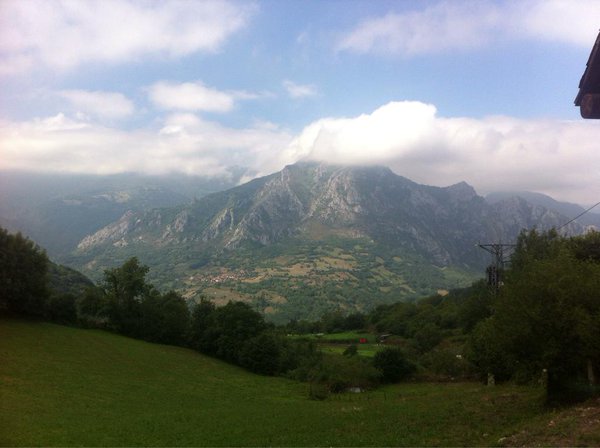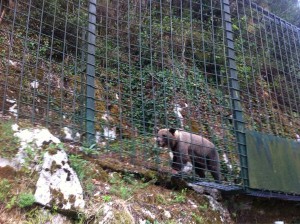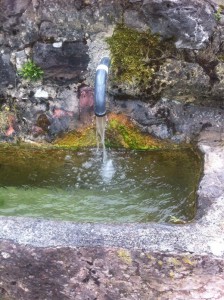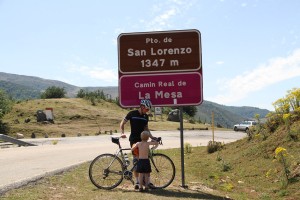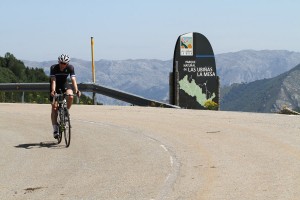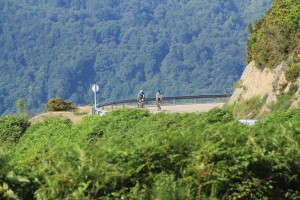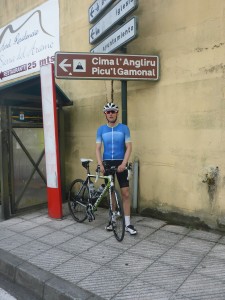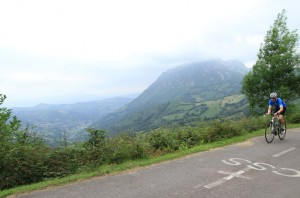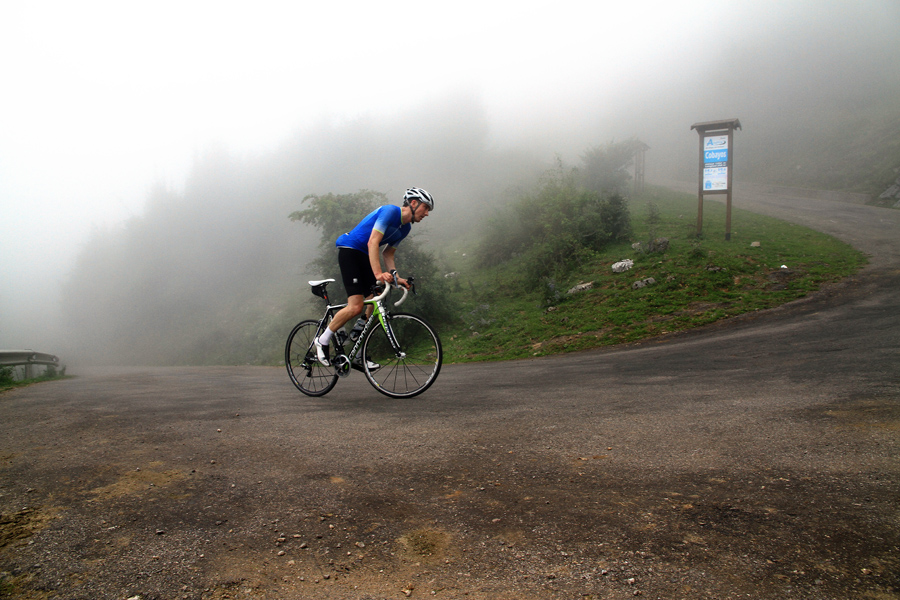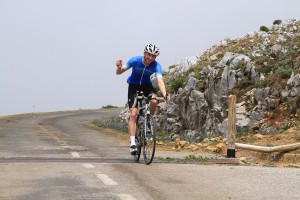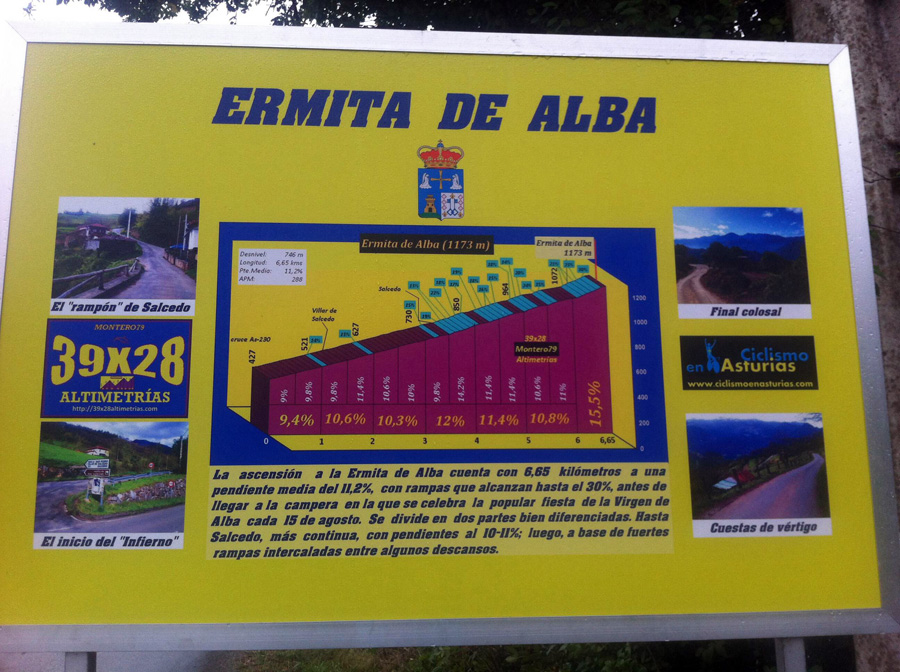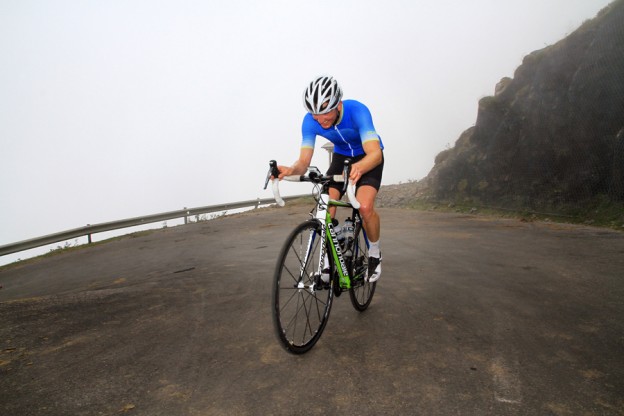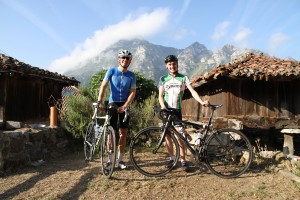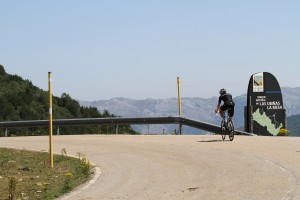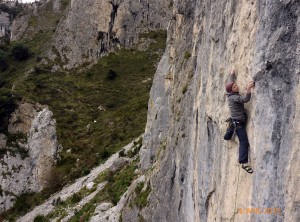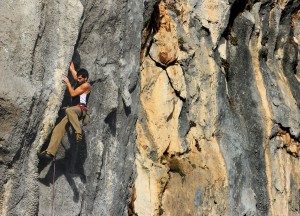yes
1711929600
1
{"2014":{"9":{"1":"1","2":"1","3":"1","4":"1","5":"1","6":"1","7":"1","8":"1","9":"1","10":"1","11":"1","12":"1","13":"1","14":"1","15":"1","16":"1","17":"1","18":"1","19":"1","20":"1","21":"1","22":"1","23":"1","24":"1","25":"1","26":"1","27":"1","28":"1","29":"1","30":"1","description-1":""},"10":{"1":"1","2":"1","3":"1","4":"1","5":"1","6":"1","7":"1","8":"1","9":"1","10":"1","11":"1","12":"1","13":"1","14":"1","15":"1","16":"1","17":"1","18":"1","19":"1","20":"1","21":"1","22":"1","23":"1","24":"1","25":"3","description-2":"johnny test"},"12":{"20":"1","21":"1","22":"1","23":"1","24":"1","25":"1","26":"1","27":"1","28":"1","29":"1","30":"1","31":"1"}},"2015":{"1":{"1":"1","2":"1","3":"1","4":"1"},"3":{"8":"1","9":"1","10":"1","11":"1","12":"1","13":"1","14":"1","15":"1","16":"1","17":"1","18":"1","19":"1","20":"1","21":"1","22":"1","23":"1","24":"1","25":"1","26":"1","27":"1","28":"1","29":"1","30":"1","31":"1"},"4":{"1":"1","2":"1","3":"1","4":"3","7":"default","8":"default","11":"1","12":"1","13":"1","14":"1","15":"1","16":"1","17":"1","18":"1","19":"1","20":"1","21":"1","22":"1","23":"1","24":"1","25":"3","26":"default","27":"default","28":"default"},"5":{"17":"2","18":"1","19":"1","20":"1","21":"1","22":"1","23":"1","24":"3"},"6":{"1":"1","2":"1","3":"1","4":"1","5":"1","6":"1","7":"1","8":"1","9":"1","10":"1","11":"1","12":"1","13":"1","14":"1","15":"1","16":"1","17":"1","18":"1","19":"1","20":"1","21":"1","22":"1","23":"1","24":"1","25":"1","26":"1","27":"1","28":"1","29":"1","30":"1"},"7":{"1":"1","2":"1","3":"1","4":"1","5":"1","6":"1","7":"1","8":"1","9":"1","10":"1","11":"1","12":"1","13":"1","14":"1","15":"1","16":"1","17":"1","18":"1","19":"1","20":"1","21":"1","22":"1","23":"1","24":"1","25":"1","26":"1","27":"1","28":"1","29":"1","30":"1","31":"1"},"8":{"1":"1","2":"1","3":"1","4":"1","5":"1","6":"1","7":"1","8":"1","9":"1","10":"1","11":"1","12":"1","13":"1","14":"1","15":"1","16":"1","17":"1","18":"1","19":"1","20":"1","21":"1","22":"1","23":"1","24":"1","25":"1","26":"1","27":"1","28":"1","29":"1","30":"1","31":"1","description-3":"Andy Bowie","description-9":"Andy Bowie / Mick Gardener"},"9":{"1":"1","2":"1","3":"1","4":"1","5":"1","6":"1","7":"1","8":"1","9":"1","10":"1","11":"1","12":"1","13":"1","14":"1","15":"1","16":"1","17":"1","18":"1","19":"1","20":"1","21":"1","22":"1","23":"1","24":"1","25":"1","26":"1","27":"1","28":"1","29":"1","30":"1"},"10":{"1":"1","2":"1","3":"1","4":"1","5":"1","6":"1","7":"1","8":"1","9":"1","10":"1","11":"1","12":"1","13":"1","14":"1","15":"1","16":"1","17":"1","18":"1","19":"1","20":"1","21":"1","22":"1","23":"1","24":"1","25":"1","26":"1","27":"1","28":"1","29":"1","30":"1","31":"1"},"11":{"1":"1","2":"1","3":"1","4":"1","5":"1","6":"1","7":"1","8":"1","9":"1","10":"1","11":"1","12":"1","13":"1","14":"1","15":"1","16":"1","17":"1","18":"1","19":"1","20":"1","21":"1","22":"1","23":"1","24":"1","25":"1","26":"1","27":"1","28":"1","29":"1","30":"1"},"12":{"1":"1","2":"1","3":"1","4":"1","5":"1","6":"1","7":"1","8":"1","9":"1","10":"1","11":"1","12":"1","13":"1","14":"1","15":"1","16":"1","17":"1","18":"1","19":"1","20":"1","21":"1","22":"1","23":"1","24":"1","25":"1","26":"1","27":"1","28":"1","29":"1","30":"1","31":"1"}},"2016":{"1":{"1":"1","2":"1","3":"1","4":"1","5":"1","6":"1","7":"1","8":"1","9":"1","10":"1","11":"1","12":"1","13":"1","14":"1","15":"1","16":"1","17":"1","18":"1","19":"1","20":"1","21":"1","22":"1","23":"1","24":"1","25":"1","26":"1","27":"1","28":"1","29":"1","30":"1","31":"1"},"2":{"1":"1","2":"1","3":"1","4":"1","5":"1","6":"1","7":"1","8":"1","9":"1","10":"1","11":"1","12":"1","13":"1","14":"1","15":"1","16":"1","17":"1","18":"1","19":"1","20":"1","21":"1","22":"1","23":"1","24":"1","25":"1","26":"1","27":"1","28":"1","29":"1"},"3":{"1":"1","2":"1","3":"1","4":"1","5":"1","6":"1","7":"1","8":"1","9":"1","10":"1","11":"1","12":"1","13":"1","14":"1","15":"1","16":"1","17":"1","18":"1","19":"1","20":"1","21":"1","22":"1","23":"1","24":"1","25":"1","26":"1","27":"1","28":"1","29":"1","30":"1","31":"1","description-7":""},"4":{"1":"1","2":"1","3":"1","4":"1","5":"1","6":"1","7":"1","8":"1","9":"1","10":"1","11":"1","12":"1","13":"1","14":"1","15":"1","21":"1","22":"1","23":"1","24":"1","25":"1","26":"1","27":"1","28":"1","29":"1","30":"1"},"5":{"1":"1","2":"1","3":"1","4":"1","5":"1","6":"1","7":"1","8":"1","9":"1","10":"1","11":"1","12":"1","13":"1","14":"1","15":"1","16":"1","17":"1","18":"1","19":"1","20":"1","21":"1","22":"1","23":"1","24":"1","25":"1","26":"1","27":"1","28":"1","29":"1","30":"1","31":"1"},"6":{"1":"1","2":"1","3":"1","4":"1","5":"1","6":"1","7":"1","8":"1","9":"1","10":"1","11":"1","22":"2","23":"1","24":"1","25":"1","26":"1","27":"1","28":"1","29":"3"},"7":{"2":"1","3":"1","4":"1","5":"1","6":"1","7":"1","8":"1","9":"1","10":"1","11":"1","12":"1","13":"1","14":"1","15":"1","16":"1","17":"1","18":"1","19":"1","20":"1","21":"1","22":"1","23":"1","24":"1","25":"1","26":"1","27":"1","28":"1","29":"1","30":"1","31":"1"},"8":{"1":"1","2":"1","3":"1","4":"1","5":"1","6":"1","7":"1","8":"1","9":"1","10":"1","11":"1","12":"1","14":"1","15":"1","16":"1","17":"1","18":"1","19":"1","20":"1","21":"1","22":"1","23":"1","24":"1","25":"1","26":"1","27":"1","28":"3","31":"1"},"9":{"1":"1","2":"1","3":"1","9":"1","10":"1","11":"1","12":"1","17":"2","18":"1","19":"1","20":"1","21":"1","22":"1","23":"1","24":"1","25":"1","26":"1","27":"1","28":"1","29":"1","30":"1"},"10":{"1":"1","2":"1","3":"1","4":"1","5":"1","6":"1","7":"1","8":"3","26":"1","27":"1","28":"1","29":"1","30":"1"},"11":{"5":"1","6":"1","7":"1","8":"1","9":"1","10":"1","11":"1","12":"1","13":"1","14":"1","15":"1","16":"1","17":"1","18":"1","19":"1","20":"1","21":"1","22":"1","23":"1","24":"1","25":"1","26":"1","27":"1","28":"1","29":"1","30":"1"},"12":{"1":"1","2":"1","3":"1","4":"1","5":"1","6":"1","7":"1","8":"1","9":"1","10":"1","11":"1","12":"1","13":"1","14":"1","15":"1","16":"1","17":"1","27":"1","28":"1","29":"1","30":"1","31":"1"}},"2017":{"1":{"1":"1","2":"1","3":"default"},"4":{"13":"1","14":"1","15":"1","16":"1","24":"2","25":"1","26":"1","27":"1","28":"1","29":"1","30":"1","description-13":"Eva y Asier","description-14":"Eva y Asier","description-15":"Eva y Asier","description-16":"Eva y Asier","description-24":"Alja","description-25":"Alja","description-26":"Alja","description-27":"Alja","description-28":"Alja","description-29":"Alja","description-30":"Alja"},"5":{"1":"1","2":"1","3":"3","9":"1","10":"1","11":"1","12":"1","13":"1","14":"1","15":"1","16":"1","17":"1","18":"1","19":"1","20":"1","21":"1","22":"1","23":"1","24":"1","25":"1","26":"1","27":"1","28":"1","description-3":"Alja","description-1":"Alja","description-2":"Alja"},"6":{"2":"1","3":"1","4":"1","5":"1","6":"default","7":"default","8":"default","9":"default","10":"default","11":"default","12":"default","13":"default","14":"default","15":"default","16":"default","17":"1","18":"1","19":"1","20":"1","21":"1","22":"1","23":"1","24":"1","25":"1","26":"1","27":"1","28":"1","29":"1","30":"1","description-17":"Stefan Krayer","description-20":"Stefan Krayer","description-22":"Stefan Krayer","description-30":"Stefan Krayer","description-2":"Kinobi"},"7":{"1":"1","9":"2","10":"1","11":"1","12":"1","13":"1","14":"1","15":"1","16":"1","17":"1","18":"1","19":"1","20":"1","21":"1","22":"1","23":"1","24":"1","25":"1","26":"1","27":"1","28":"1","29":"3","description-1":"Stefan Krayer","description-9":"Danielle Roscher begins","description-15":"Danielle Roscher ends","description-22":"Jochen Wuttke Arrives","description-29":"Jochen Wuttke Leaves"},"8":{"3":"1","4":"1","5":"1","6":"1","7":"1","8":"1","9":"1","10":"1","11":"1","12":"1","13":"1","14":"1","15":"1","16":"1","17":"1","18":"1","19":"1","20":"1","21":"1","22":"1","23":"1","24":"1","25":"1","26":"default","27":"default","28":"default","29":"default","30":"default","31":"default","description-11":"Emma Rand","description-18":"Emma Rand","description-3":"Will Webb","description-25":"joseph denicola","description-23":"Joseph Denicola","description-19":"Pablo airbnb"},"9":{"3":"2","4":"1","5":"1","6":"1","7":"1","8":"1","9":"1","10":"3","18":"1","19":"1","20":"1","21":"1","22":"1","23":"1","24":"1","25":"1","26":"1","27":"1","28":"1","29":"1","30":"1","description-23":"Nora Polleis","description-3":"David White","description-4":"","description-18":"Alison","description-22":"Alsion","description-30":"Kate Gasgoyne"},"10":{"1":"1","2":"1","3":"1","4":"1","5":"1","6":"1","7":"1","8":"1","9":"1","10":"1","11":"1","12":"1","13":"1","14":"1","15":"1","16":"1","17":"1","18":"1","19":"1","20":"1","21":"1","22":"1","23":"1","24":"1","25":"1","26":"1","27":"1","28":"1","29":"1","30":"1","31":"1","description-15":"john mckenzie","description-14":"Kate Gasgoyne","description-13":"Kate Gasgoyne","description-12":"Kate Gasgoyne","description-11":"Kate Gasgoyne","description-10":"Kate Gasgoyne","description-9":"Kate Gasgoyne","description-8":"Kate Gasgoyne","description-7":"Kate Gasgoyne","description-6":"Kate Gasgoyne","description-5":"Kate Gasgoyne","description-4":"Kate Gasgoyne","description-3":"Kate Gasgoyne","description-2":"Kate Gasgoyne","description-1":"Kate Gasgoyne"},"11":{"1":"1","2":"1","3":"1","4":"1","5":"1","6":"1","7":"1","8":"1","9":"1","10":"1","11":"1","12":"1","13":"1","14":"1","15":"1","16":"1","17":"1","18":"1","19":"1","20":"1","21":"1","22":"1","23":"1","24":"1","25":"1","26":"1","27":"1","28":"1","29":"1","30":"1"},"12":{"1":"1","2":"1","3":"1","4":"1","5":"1","6":"1","7":"1","8":"1","9":"1","10":"1","11":"1","12":"1","13":"1","14":"1","15":"1","16":"1","17":"1","18":"1","19":"1","20":"1","21":"1","22":"1","23":"1"}},"2018":{"1":{"9":"1","10":"1","11":"1","12":"1","13":"1","14":"1","15":"1","16":"1","17":"1","18":"1","19":"1","20":"1","21":"1","22":"1","23":"1","24":"1","25":"1","26":"1","27":"1","28":"1","29":"1","30":"1","31":"1","description-9":""},"2":{"1":"1","2":"1","3":"1","4":"1","5":"1","6":"1","7":"1","8":"1","9":"1","10":"1","11":"1","12":"1","13":"1","14":"1","15":"1","16":"1","17":"1","18":"1","19":"1","20":"1","21":"1","22":"1","23":"1","24":"1","25":"1","26":"1","27":"1","28":"1"},"3":{"1":"1","2":"1","3":"1","4":"1","5":"1","6":"1","7":"1","8":"1","9":"1","10":"1","11":"1","12":"1","13":"1","14":"1","23":"2","24":"1","25":"1","26":"1","27":"1","28":"3","30":"2","31":"1","description-30":"Louise Pellet Arrives","description-31":"Louise Pellet"},"4":{"1":"1","2":"1","3":"1","4":"1","5":"1","6":"1","7":"1","8":"3","15":"2","16":"1","17":"1","18":"1","19":"1","20":"1","21":"3","22":"default","description-7":"Louise Pellet","description-6":"Louise Pellet","description-5":"Louise Pellet","description-4":"Louise Pellet","description-3":"Louise Pellet","description-2":"Louise Pellet","description-1":"Louise Pellet","description-15":"Fran Pothecary"},"5":{"9":"2","10":"1","11":"1","12":"1","13":"1","14":"1","15":"1","16":"1","17":"1","18":"1","19":"1","20":"1","21":"1","22":"1","23":"1","24":"1","25":"1","26":"1","27":"1","28":"1","29":"3","30":"2","31":"1","description-9":"Jay Myers Arrives","description-29":"Jay Myers Leaves","description-28":"Jay Myers","description-27":"Jay Myers","description-26":"Jay Myers","description-25":"Jay Myers","description-24":"Jay Myers","description-23":"Jay Myers","description-22":"Jay Myers","description-21":"Jay Myers","description-20":"Jay Myers","description-19":"Jay Myers","description-18":"Jay Myers","description-17":"Jay Myers","description-16":"Jay Myers","description-15":"Jay Myers","description-14":"Jay Myers","description-13":"Jay Myers","description-12":"Jay Myers","description-11":"Jay Myers","description-10":"Jay Myers","description-30":"Eoghan","description-31":"Eoghan"},"6":{"6":"2","7":"1","8":"1","9":"1","10":"1","11":"1","12":"1","13":"1","14":"1","15":"1","16":"1","17":"1","18":"1","19":"1","20":"1","21":"1","22":"1","23":"1","24":"1","25":"1","26":"1","27":"3","description-6":"Eoghan leaves // Will Chen Arrives","description-9":"Will Chen","description-27":"Will Chen Leaves","description-16":"Will Chen","description-19":"Will Chen","description-7":"Will Chen","description-8":"Will Chen","description-10":"Will Chen","description-11":"Will Chen","description-12":"Will Chen","description-13":"Will Chen","description-14":"Will Chen","description-15":"Will Chen","description-17":"Will Chen","description-18":"Will Chen","description-20":"Will Chen","description-21":"Will Chen","description-22":"Will Chen","description-23":"Will Chen","description-24":"Will Chen","description-25":"Will Chen","description-26":"Will Chen","description-1":"Eoghan","description-2":"Eoghan","description-3":"Eoghan","description-4":"Eoghan","description-5":"Eoghan"},"7":{"21":"2","22":"1","23":"1","24":"1","25":"1","26":"1","27":"1","28":"3","31":"1","description-21":"Sion Brocklehurst arrives","description-28":"Sion Brocklehurst Leaves","description-22":"Sion Brocklehurst ","description-23":"Sion Brocklehurst ","description-24":"Sion Brocklehurst ","description-25":"Sion Brocklehurst ","description-26":"Sion Brocklehurst ","description-27":"Sion Brocklehurst ","description-31":"David Kelly"},"8":{"1":"1","2":"1","3":"1","4":"1","5":"1","6":"1","7":"1","8":"3","15":"2","16":"1","17":"1","18":"1","19":"1","20":"1","21":"1","22":"3","24":"1","25":"1","26":"1","27":"1","28":"1","29":"1","30":"1","31":"1","description-24":"stow Kellner","description-15":"David Ruiz Arrives","description-16":"David Ruiz","description-17":"David Ruiz","description-18":"David Ruiz","description-19":"David Ruiz","description-20":"David Ruiz","description-21":"David Ruiz","description-22":"David Ruiz Leaves","description-1":"David Kelly Trip Advisor","description-2":"David Kelly","description-3":"David Kelly","description-4":"David Kelly","description-5":"David Kelly","description-6":"David Kelly","description-7":"David Kelly Leaves Trip Advisor"},"9":{"1":"1","2":"1","3":"1","4":"1","5":"1","6":"1","7":"3","8":"1","9":"1","10":"1","11":"1","12":"1","13":"1","14":"1","15":"default","16":"default","17":"default","18":"default","19":"default","20":"default","21":"default","22":"default","description-14":"Rita Aruajo","description-15":"Rita Aruajo Leaves // Andy Swann Arrives","description-20":"","description-16":"","description-17":"","description-18":"","description-19":"","description-21":"","description-7":"Stow Kelner Leaves // Rita Aruajo Arrives","description-6":"Stow Kelner","description-5":"Stow Kelner","description-4":"Stow Kelner","description-3":"Stow Kelner","description-2":"Stow Kelner","description-1":"Stow Kelner","description-8":"Rita Aruajo","description-9":"Rita Aruajo","description-10":"Rita Aruajo","description-11":"Rita Aruajo","description-12":"Rita Aruajo","description-13":"Rita Aruajo"},"11":{"2":"2","3":"1","4":"1","5":"1","6":"1","7":"1","8":"1","9":"1","10":"1","11":"1","12":"1","13":"1","14":"1","15":"1","16":"1","17":"1","18":"1","19":"1","20":"1","21":"1","22":"1","23":"1","24":"1","25":"1","26":"1","27":"1","28":"1","29":"1","30":"1","description-3":"Tony / Sarah","description-4":"Tony / Sarah","description-5":"Tony / Sarah","description-6":"Tony / Sarah","description-7":"Tony / Sarah","description-8":"Tony / Sarah","description-9":"Tony / Sarah","description-10":"Tony / Sarah"},"12":{"1":"1","2":"1","3":"1","4":"1","5":"1","6":"1","7":"1","8":"1","9":"1","10":"1","11":"1","12":"1","13":"1","14":"1","15":"1","16":"1","17":"1","18":"1","19":"1","20":"1","21":"1","22":"3"}},"2019":{"3":{"18":"default","19":"default","20":"default","21":"default","22":"default","23":"default","24":"default","25":"default","26":"default","27":"default"},"4":{"13":"2","14":"1","15":"1","16":"1","17":"1","18":"1","19":"1","20":"1","21":"1","22":"1","23":"1","24":"1","25":"1","26":"1","27":"1","28":"1","29":"1","30":"1","description-13":"Carolyn Young Arrives","description-14":"Carolyn Young ","description-15":"Carolyn Young ","description-16":"Carolyn Young ","description-17":"Carolyn Young ","description-18":"Carolyn Young ","description-19":"Carolyn Young ","description-20":"Carolyn Young Leaves Jose Manuel arrives pay for one night","description-23":"Jose Manuel AIRBNB Arrives // Galina Arrives","description-24":"Galina","description-25":"Galina","description-26":"Galina","description-27":"Galina","description-28":"Galina","description-29":"Galina","description-30":"Galina","description-21":"Jose Manuel AIRBNB Arrives"},"5":{"1":"1","2":"1","3":"1","4":"1","5":"1","6":"3","14":"1","15":"1","16":"1","17":"1","18":"1","19":"1","20":"1","21":"1","22":"1","23":"1","24":"1","25":"1","26":"1","27":"3","28":"2","29":"1","30":"3","description-6":"Galina Leaves","description-1":"Galina","description-2":"Galina","description-3":"Galina","description-4":"Galina","description-5":"Galina","description-14":"Karishma and Michal arrive","description-18":"Lewis Haffey Arrives","description-27":"Lewis Haffey Leaves","description-15":"Karishma and Michal ","description-16":"Karishma and Michal ","description-17":"Karishma and Michal ","description-19":"Lewis + Karishma","description-20":"Lewis + Karishma","description-21":"Lewis + Karishma","description-22":"Lewis + Karishma","description-23":"Lewis + Karishma","description-24":"Lewis + Karishma","description-25":"Lewis + Karishma","description-26":"Lewis + Karishma","description-28":"Tunda Leaves","description-29":"Tunda","description-30":"Tunda Leaves"},"6":{"1":"default","2":"default","3":"default","4":"default","5":"default","6":"2","7":"1","8":"1","9":"1","10":"1","11":"1","12":"1","13":"1","14":"1","15":"3","16":"default","17":"default","18":"default","23":"2","24":"1","25":"1","26":"1","27":"1","28":"1","29":"1","30":"1","description-6":"Josh Wharton arrives","description-15":"Josh Wharton leaves","description-7":"","description-8":" ","description-9":"","description-10":"","description-11":"","description-12":"","description-13":" ","description-14":"","description-23":"Natalya Arrives","description-24":"Natalya","description-25":"Natalya","description-26":"Natalya","description-27":"Natalya","description-28":"Natalya","description-29":"Natalya","description-30":"Natalya"},"7":{"1":"1","2":"1","3":"1","4":"1","5":"1","6":"1","7":"1","8":"1","9":"1","10":"1","11":"1","12":"1","13":"1","14":"1","15":"1","16":"1","17":"1","18":"1","19":"1","20":"1","21":"1","22":"1","23":"1","24":"1","25":"1","26":"1","27":"1","28":"1","29":"1","30":"1","31":"1","description-6":"Nataya Leaves // Jane Palmer arrives","description-1":"Natalya","description-2":"Natalya","description-3":"Natalya","description-4":"Natalya","description-5":"Natalya","description-7":"Jane + Gareth","description-8":"Jane + Gareth","description-9":"Jane + Gareth","description-10":"Jane + Gareth","description-11":"Jane + Gareth","description-12":"Jane + Gareth","description-13":"Jane + Gareth","description-14":"Jane + Gareth","description-15":"Jane + Gareth","description-16":"Jane + Gareth","description-17":"Jane + Gareth","description-18":"Jane + Gareth","description-19":"Jane + Gareth","description-20":"Jane + Gareth Leave // Jimmy Shelton Arrives","description-21":"Jimmy Shelton","description-22":"Jimmy Shelton","description-23":"Jimmy Shelton","description-24":"Jimmy Shelton","description-25":"Jimmy Shelton","description-26":"Jimmy Shelton","description-27":"Jimmy Shelton","description-28":"Jimmy Shelton","description-29":"Jimmy Shelton","description-30":"Jimmy Shelton","description-31":"Jimmy Shelton"},"8":{"1":"1","2":"1","3":"1","4":"1","5":"1","6":"1","7":"1","8":"1","9":"1","10":"1","11":"1","12":"1","13":"1","14":"1","15":"1","16":"1","17":"1","18":"1","19":"1","20":"1","21":"1","22":"1","23":"1","24":"1","25":"1","26":"1","27":"1","28":"1","29":"1","30":"1","31":"1","description-12":"Elisabetta","description-13":"Elisabetta","description-14":"Elisabetta","description-15":"Elisabetta","description-16":"Elisabetta","description-10":"Jimmy shelton Leaves // Elisabetta Arrives","description-17":"Elisabetta","description-11":"Elisabetta","description-18":"Elisabetta Leaves // Jim Duffy Arrives","description-1":"Jimmy shelton ","description-2":"Jimmy shelton ","description-3":"Jimmy shelton ","description-4":"Jimmy shelton ","description-5":"Jimmy shelton ","description-6":"Jimmy shelton ","description-7":"Jimmy shelton ","description-8":"Jimmy shelton ","description-9":"Jimmy shelton ","description-31":"Jim Duffy Leaves // Thomas Raab arrives","description-19":"Jim Duffy","description-20":"Jim Duffy","description-21":"Jim Duffy","description-22":"Jim Duffy","description-23":"Jim Duffy","description-24":"Jim Duffy","description-25":"Jim Duffy","description-26":"Jim Duffy","description-27":"Jim Duffy","description-28":"Jim Duffy","description-29":"Jim Duffy","description-30":"Jim Duffy"},"9":{"1":"1","2":"1","3":"1","4":"1","5":"1","6":"1","7":"1","8":"1","9":"1","10":"1","11":"3","13":"2","14":"1","15":"3","20":"2","21":"1","22":"1","23":"1","24":"1","25":"1","26":"1","27":"3","description-20":"","description-21":"","description-22":"","description-23":"","description-24":"","description-25":"","description-26":"","description-6":"Thomas Raab Leaves // Jose AirBnB arrives","description-5":"Thomas Raab","description-4":"Thomas Raab","description-3":"Thomas Raab","description-2":"Thomas Raab","description-1":"Thomas Raab","description-8":" Jose AirBnB Leaves / Alberto AirBnB Arrives","description-11":"Alberto AirBnB Leaves","description-13":"Jose AirBnB arrives","description-15":"Jose AirBnB Leaves","description-16":"","description-9":"Alberto AirBnB","description-10":"Alberto AirBnB"},"10":{"2":"2","3":"1","4":"1","5":"1","6":"1","7":"1","8":"1","9":"1","10":"3","11":"2","12":"1","13":"1","14":"1","15":"1","16":"1","17":"1","18":"1","19":"1","20":"1","21":"3","26":"2","27":"1","28":"1","29":"1","30":"1","31":"1","description-26":"Chris Nunn","description-27":"Chris Nunn","description-28":"Chris Nunn","description-29":"Chris Nunn","description-30":"Chris Nunn","description-31":"Chris Nunn","description-11":"Gav arrives","description-20":"Raquel AirBNB","description-12":"Gav","description-13":"Gav","description-14":"Gav","description-15":"Gav","description-16":"Gav","description-17":"Gav","description-18":"Gav leaves / Raquel AirBNB Arrives","description-19":"Raquel AirBNB","description-7":"Martin Airbnb","description-2":"Americans Mary Arrives","description-3":"Americans Mary","description-4":"Americans Mary ","description-5":"Americans Mary Leaves // Martin Arrives Airbnb","description-6":"Martin Airbnb","description-10":"Martin Leaves Airbnb","description-8":"Martin Airbnb","description-9":"Martin Airbnb","description-21":"Raquel Leaves","description-23":""},"11":{"1":"1","2":"1","3":"1","4":"1","5":"1","6":"1","7":"1","8":"1","9":"1","10":"1","11":"1","12":"1","13":"1","14":"1","15":"1","16":"1","17":"1","18":"1","19":"1","20":"1","21":"1","22":"1","23":"1","24":"1","25":"1","26":"1","27":"1","28":"1","29":"1","30":"1","description-1":"Chris Nunn leaves - may stay until Sat","description-2":"Chris Nunn leaves ?? // Tony Arrives "},"12":{"1":"1","2":"1","3":"1","4":"1","5":"1","6":"1","7":"1","8":"1","9":"1","10":"1","11":"1","12":"1","13":"1","14":"1","15":"1","16":"1","17":"1","18":"1","19":"1","20":"1","21":"1","22":"default","23":"default","24":"2","25":"1","26":"1","27":"1","28":"1","29":"1","30":"3"}},"2020":{"1":{"1":"3","17":"2","18":"1","19":"3","24":"2","25":"1","26":"1","27":"3","29":"2","30":"1","31":"1"},"3":{"19":"default"},"4":{"10":"default","11":"default","12":"default","13":"default","14":"default","15":"default","16":"default","17":"default","18":"default","19":"default"},"5":{"18":"default","19":"default","20":"default","21":"default","22":"default","23":"default","24":"default","25":"default","26":"default","27":"default","28":"default","29":"default","30":"default","31":"default","description-29":"","description-30":"","description-31":"","description-18":"","description-27":"","description-19":"","description-20":"","description-21":"","description-22":"","description-23":"","description-24":"","description-25":"","description-26":""},"6":{"1":"default","2":"default","3":"default","4":"default","5":"default","6":"default","7":"default","8":"default","9":"default","13":"default","14":"default","15":"default","16":"default","17":"default","18":"default","19":"default","20":"default","29":"1","30":"1","description-9":"","description-1":"","description-2":"","description-3":"","description-4":"","description-5":"","description-6":"","description-7":"","description-8":"","description-13":"","description-19":"","description-20":"","description-21":"","description-29":"Diego, airbnb"},"7":{"1":"1","2":"1","3":"1","4":"1","5":"3","6":"2","7":"1","8":"1","9":"1","10":"1","11":"3","12":"default","13":"default","14":"2","15":"1","16":"1","17":"1","18":"1","19":"1","20":"1","21":"1","22":"1","23":"3","24":"2","25":"1","26":"1","27":"3","28":"2","29":"1","30":"1","31":"1","description-16":"Victor Almeria Trip Advisor","description-20":"","description-14":"Victor Almeria Trip Advisor // To pay €85// 2 GUESTS","description-15":"Victor Almeria Trip Advisor // To pay €85 ","description-6":"Ana Belen AirBNB Arrives","description-9":"Ana Belen AirBNB","description-7":"Ana Belen AirBNB","description-8":"Ana Belen AirBNB","description-10":"Ana Belen AirBNB Leaves","description-26":"Franciso","description-27":"Franciso Leaves","description-28":"Pilar - Five people","description-29":"Pilar","description-30":"Pilar","description-31":"Pilar","description-24":"Francisco Arrives","description-25":"Franciso"},"8":{"1":"1","2":"1","3":"1","4":"1","5":"1","6":"1","7":"1","8":"1","9":"1","10":"1","11":"1","12":"1","13":"1","14":"1","15":"1","16":"1","17":"1","18":"3","19":"2","20":"1","21":"1","22":"1","23":"1","24":"3","25":"1","26":"1","27":"1","28":"1","29":"1","30":"1","31":"1","description-13":"Patricia AirBnB","description-18":"Patricia Leaves ","description-25":"CLEANING DAY","description-26":"","description-28":"","description-19":"Available Morning then cleaning","description-24":"Francois Leaves","description-20":"Cleaning Morning // Francios 2 ad + 1 child Air bnb // ","description-21":"Francios","description-22":"Francios","description-23":"Francios","description-3":"Pilar leaves // CLEANING // Sandra Juaranz Arrives","description-10":"Spanish Sandra Juaranz Leaves // CLEANING","description-4":"Spanish Sandra Juaranz ","description-5":"Spanish Sandra Juaranz ","description-6":"Spanish Sandra Juaranz ","description-7":"Spanish Sandra Juaranz ","description-8":"Spanish Sandra Juaranz ","description-9":"Spanish Sandra Juaranz ","description-27":"","description-29":"","description-30":"","description-31":"","description-2":"Pilar","description-1":"Pilar","description-11":"Cleaning // Patricia AirBnB Arrives","description-17":"Patricia AirBnB","description-15":"Patricia AirBnB","description-16":"Patricia AirBnB","description-12":"Patricia AirBnB","description-14":"Patricia AirBnB"},"9":{"1":"1","2":"1","3":"1","4":"3","5":"default","6":"2","7":"1","8":"1","9":"1","10":"1","11":"1","12":"1","13":"3","description-1":"","description-2":"","description-3":"","description-4":"Cleaning Day","description-9":"","description-8":"","description-10":"","description-6":"Beatriz Arrives","description-7":"","description-13":"Beatriz leaves","description-16":""},"10":{"10":"2","11":"1","12":"1","13":"1","14":"1","15":"1","16":"1","17":"1","18":"1","19":"1","20":"1","21":"1","22":"1","23":"1","24":"1","25":"1","26":"1","27":"1","28":"1","29":"1","30":"1","31":"1"},"11":{"1":"1","2":"1","3":"1","4":"1","5":"1","6":"1","7":"1","8":"1","9":"1","10":"1","11":"1","12":"1","13":"1","14":"1","15":"1","16":"1","17":"1","18":"1","19":"1","20":"1","21":"1","22":"1","23":"1","24":"1","25":"1","26":"1","27":"1","28":"1","29":"1","30":"1"},"12":{"1":"1","2":"1","3":"1","4":"1","5":"1","6":"1","7":"1","8":"1","9":"1","10":"1","11":"1","12":"1","13":"1","14":"1","15":"1","16":"1","17":"1","18":"1","19":"3"}},"2021":{"4":{"25":"default","26":"default","27":"default","28":"default","29":"default","30":"default"},"5":{"1":"1","2":"1","3":"1","4":"1","5":"1","6":"1","7":"1","8":"1","9":"1","10":"1","11":"1","12":"1","13":"1","14":"1","15":"1","16":"1","17":"1","18":"1","19":"1","20":"1","21":"1","22":"1","23":"1","24":"1","25":"1","26":"1","27":"1","28":"1","29":"1","30":"1","31":"1","description-24":"","description-25":"","description-26":"","description-27":" ","description-28":"","description-16":"","description-17":"","description-18":"","description-19":"","description-20":"","description-21":"","description-22":""},"6":{"1":"1","2":"1","3":"1","4":"1","5":"default","7":"1","8":"1","9":"1","10":"1","11":"1","12":"1","13":"1","14":"1","15":"1","16":"1","17":"1","18":"1","26":"default","27":"default","28":"default","29":"default","30":"default","description-1":"","description-2":"","description-26":"","description-27":"","description-28":"","description-29":"","description-30":""},"7":{"1":"default","2":"default","3":"default","11":"2","12":"1","13":"1","14":"1","15":"1","16":"1","17":"1","18":"1","19":"1","20":"1","21":"1","22":"1","23":"1","24":"1","25":"1","26":"3","28":"2","29":"1","30":"1","31":"1","description-1":"","description-2":"","description-3":"","description-17":"Alberto + 2 Arrives // Pascale + 1 Arrives","description-18":"Pascale + 1 ","description-19":"Pascale + 1 ","description-20":"Pascale + 1 ","description-21":"Pascale + 1 ","description-22":"Pascale + 1 ","description-23":"Pascale + 1 ","description-24":"Pascale + 1 ","description-25":"Pascale + 1 ","description-26":"Pascale + 1 Leaves // ","description-28":"Pilar ","description-29":"Pilar","description-30":"Pilar","description-31":"Pilar","description-11":"Alberto + 2 Arrives","description-12":"Alberto + 2 ","description-13":"Alberto + 2 ","description-14":"Alberto + 2 ","description-15":"Alberto + 2 ","description-16":"Alberto + 2 "},"8":{"1":"3","2":"2","3":"1","4":"1","5":"1","6":"1","7":"1","8":"1","9":"1","10":"1","11":"1","12":"1","13":"1","14":"3","15":"2","16":"1","17":"1","18":"1","19":"1","20":"1","21":"1","22":"1","23":"1","24":"1","25":"1","26":"3","27":"1","28":"1","29":"1","30":"1","31":"3","description-18":"Ivan","description-26":"Mar - AirBNB Leaves // Eric AirBNB Arrives","description-19":"Ivan ","description-20":"Ivan","description-21":"IVan Leaves // Mar - AirBNB Arrives - 5 people","description-24":"Mar - AirBNB ","description-23":"Mar - AirBNB ","description-22":"Mar - AirBNB ","description-25":"Mar - AirBNB ","description-1":"Pilar Leaves ","description-2":"// Maria Jose Arrives Valencia","description-3":"Maria Jose","description-4":"Maria Jose","description-5":"Maria Jose","description-6":"Maria Jose","description-7":"Maria Jose","description-8":"Maria Jose","description-9":"Maria Jose","description-10":"Maria Jose","description-11":"Maria Jose","description-12":"Maria JoseMaria Jose","description-13":"Maria Jose","description-14":"Maria Jose Leaves","description-15":"Ivan Arrives 2 people","description-16":"Ivan","description-17":"Ivan","description-31":"Eric Leaves // ","description-27":"Eric","description-28":"Eric","description-29":"Eric","description-30":"Eric"},"9":{"6":"2","7":"1","8":"1","9":"1","10":"1","11":"1","12":"1","13":"3","14":"default","15":"default","16":"default","17":"default","18":"default","19":"default","20":"default","21":"default","22":"default","23":"default","24":"default","description-12":"","description-24":"","description-13":"Yolanda Leaves","description-7":""},"10":{"1":"2","2":"1","3":"1","4":"1","5":"1","6":"3","9":"2","10":"1","11":"1","12":"1","13":"1","14":"1","15":"1","16":"3","description-1":"Raul + 4 Trip Advisor","description-2":"Raul + 4","description-6":"Raul + 4 Leaves","description-9":"Graham arrives","description-16":"Graham Leaves","description-10":""},"12":{"29":"1","30":"1","31":"1"}},"2022":{"1":{"1":"1","2":"1","3":"1","4":"1","5":"1","6":"1","7":"1","8":"1"},"5":{"8":"2","9":"1","10":"1","11":"1","12":"1","13":"1","14":"1","15":"3","18":"2","19":"1","20":"1","21":"1","22":"1","23":"1","24":"1","25":"1","26":"1","27":"1","28":"3","description-29":"","description-8":"Andy Swann Arrives","description-15":"Andy Swann Leaves","description-9":"Andy Swann ","description-10":"Andy Swann","description-11":"Andy Swann","description-12":"Andy Swann","description-13":"Andy Swann","description-14":"Andy Swann","description-19":"Derek Groves Arrives","description-20":"Derek Groves ","description-21":"Derek Groves ","description-22":"Derek Groves ","description-23":"Derek Groves ","description-24":"Derek Groves ","description-25":"Derek Groves ","description-26":"Derek Groves ","description-27":"Derek Groves ","description-28":"Derek Groves leaves"},"6":{"11":"2","12":"1","13":"1","14":"1","15":"1","16":"1","17":"1","18":"3","28":"2","29":"1","30":"1","description-11":"Eleanor McGarry","description-28":"Shannon Arrives","description-29":"Shannon","description-30":"Shannon"},"7":{"1":"1","2":"1","3":"1","4":"1","5":"1","6":"1","7":"1","8":"1","9":"1","10":"1","11":"3","25":"2","26":"1","27":"1","28":"1","29":"1","30":"1","31":"1","description-4":"Shannon Leaves // Karen Tempest arrives","description-5":"Karen Tempest","description-6":"Karen Tempest","description-7":"Karen Tempest","description-8":"Karen Tempest","description-9":"Karen Tempest","description-10":"Karen Tempest","description-11":"Karen Tempest leaves","description-1":"Shannon","description-2":"Shannon","description-3":"Shannon","description-25":"Tom Rainbow"},"8":{"1":"1","2":"1","3":"1","4":"1","5":"1","6":"1","7":"1","8":"1","9":"1","10":"1","11":"1","12":"1","13":"1","14":"1","15":"1","16":"1","17":"1","18":"1","19":"1","20":"1","21":"3","25":"default","26":"2","27":"1","28":"1","29":"1","30":"1","31":"3","description-1":"Tom Rainbow leaves // Jaime Arrives 2 + Kid + Dog","description-2":"Jaime","description-3":"Jaime","description-4":"Jaime","description-5":"Jaime","description-6":"Jaime","description-7":"Jaime","description-8":"Jaime","description-9":"Jaime","description-10":"Jaime","description-11":"Jaime","description-12":"Jaime","description-13":"Jaime","description-14":"Jaime leaves // Tegwen Arrives","description-18":"Tegwen + 3","description-21":"Tegwen Leaves","description-15":"Tegwen + 3","description-16":"Tegwen + 3","description-17":"Tegwen + 3","description-19":"Tegwen + 3","description-20":"Tegwen + 3","description-25":"","description-26":"Fernando Airbnb Arrives","description-27":"","description-28":"","description-29":"","description-31":"Fernando Airbnb Leaves"},"9":{"17":"2","18":"1","19":"1","20":"1","21":"1","22":"1","23":"1","24":"1","25":"1","26":"1","27":"1","28":"3","description-17":"Jan-Patrick arrives","description-18":"Jan-Patrick ","description-19":"Jan-Patrick ","description-20":"Jan-Patrick ","description-21":"Jan-Patrick ","description-22":"Jan-Patrick ","description-23":"Jan-Patrick ","description-24":"Jan Leaves // Joses GF Arrives","description-28":" Joses GF Leaves","description-25":" Joses GF ","description-26":" Joses GF Arrives","description-27":" Joses GF Arrives"},"10":{"1":"1","2":"1","3":"1","4":"1","5":"1","6":"1","7":"1","8":"1","9":"1","10":"1","11":"1","12":"1","13":"1","14":"1","15":"1","16":"1","17":"1","18":"1","19":"1","20":"1","21":"1","22":"1","23":"1","24":"1","25":"1","26":"1","27":"1","28":"1","29":"1","30":"1","31":"1"},"11":{"1":"1","2":"1","3":"1","4":"1","5":"1","6":"1","7":"1","8":"1","9":"1","10":"1","11":"1","12":"1","13":"1","14":"1","15":"1","16":"1","17":"1","18":"1","19":"1","20":"1","21":"1","22":"1","23":"1","24":"1","25":"1","26":"1","27":"1","28":"1","29":"1","30":"1"},"12":{"1":"1","2":"1","3":"1","4":"1","5":"1","6":"1","7":"1","8":"1","9":"1","10":"1","11":"1","12":"1","13":"1","14":"1","15":"1","16":"1","17":"1","18":"1","19":"1","20":"1","21":"1","22":"1","23":"1","24":"1","25":"1","26":"1","27":"1","28":"1","29":"1","30":"1","31":"1"}},"2023":{"2":{"24":"2","25":"1","26":"1","27":"1","28":"1","description-24":"Richie - Mary--QUOTE--s client "},"3":{"1":"1","2":"1","3":"3","5":"2","6":"1","7":"1","8":"3","21":"2","22":"1","23":"3","description-5":"Kiki - Dutch person - I person","description-3":"Richie - Mary--QUOTE--s client leaves","description-8":"","description-22":"Enrique AirBnB","description-21":"Enrique AirBnB","description-23":"Enrique AirBnB"},"4":{"5":"2","6":"1","7":"1","8":"1","9":"3","24":"2","25":"1","26":"1","27":"1","28":"1","29":"1","30":"1","description-29":"Diedre Leaves / Jenny Yao - AirBnB ","description-30":"Jenny Yao - AirBnB ","description-5":"Hector 2 people ","description-24":"Diedre / Geraldine / Mary "},"5":{"1":"1","2":"1","3":"1","4":"1","5":"1","6":"1","7":"1","8":"1","9":"1","10":"1","11":"1","12":"1","13":"1","14":"1","15":"1","16":"1","17":"1","18":"1","19":"1","20":"1","21":"1","22":"1","23":"1","24":"1","25":"1","26":"1","27":"1","28":"1","29":"1","30":"1","31":"3","description-5":"Jenny Leaves // Malcolm Arrives","description-7":"Malcolm","description-4":"Jenny","description-3":"Jenny","description-2":"Jenny","description-1":"Jenny","description-11":"Malcolm","description-18":"Malcolm","description-19":"Malcolm","description-20":"Malcolm","description-21":"Malcolm","description-22":"Malcolm","description-23":"Malcolm","description-24":"Malcolm","description-25":"Malcolm","description-26":"Malcolm","description-27":"Malcolm","description-28":"Malcolm","description-29":"Malcolm","description-10":"Malcolm","description-31":"Malcolm leaves","description-30":"Malcolm","description-6":"Malcolm","description-8":"Malcolm","description-9":"Malcolm","description-12":"Malcolm","description-13":"Malcolm","description-14":"Malcolm","description-15":"Malcolm","description-16":"Malcolm","description-17":"Malcolm"},"7":{"5":"2","6":"1","7":"1","8":"1","9":"1","10":"1","11":"1","12":"1","13":"1","14":"1","15":"1","16":"3","29":"2","30":"1","31":"1","description-29":"Pablo - AirBnB Arrives","description-30":"Pablo - AirBnB","description-31":"Pablo - AirBnB","description-5":"Maya Arrives","description-16":"Maya Leaves"},"8":{"1":"1","2":"1","3":"1","4":"1","5":"1","6":"3","7":"2","12":"1","13":"1","14":"1","15":"1","16":"1","17":"3","description-1":"Pablo - AirBnB","description-2":"Pablo - AirBnB","description-3":"Pablo - AirBnB","description-4":"Pablo - AirBnB","description-5":"Pablo - AirBnB","description-6":"Pablo - AirBnB - Leaves","description-8":"","description-9":"","description-13":"Chris Aussie ","description-14":"Chris Aussie ","description-15":"Chris Aussie ","description-16":"Chris Aussie ","description-17":"Chris Aussie Leaves","description-7":"Monserrat","description-12":"Monserrat Leaves // Chris Aussie Arrives","description-21":""}}}
{"default":{"name":{"default":"Available","hr":"Slobodno","cs":"Volno","da":"Ledigt","nl":"Vrij","en":"Available","fr":"Libre","de":"Frei","hu":"Szabad","it":"Libero","ro":"Disponobil","ru":"\u0414\u043e\u0441\u0442\u0443\u043f\u043d\u043e","sk":"Vo\u013en\u00fd","es":"Libre","sv":"Ledigt","uk":"B\u0456\u043b\u044c\u043d\u043e","cz":"","jp":"\u7a7a\u304d\u3042\u308a","ua":""},"color":"#DDFFCC","splitColor":false,"bookable":"yes"},"1":{"name":{"default":"Booked","hr":"Zauzeto","cs":"Obsazeno","da":"Booket","nl":"Bezet","en":"Booked","fr":"Occup\u00e9","de":"Belegt","hu":"Foglalt","it":"Prenotato","ro":"Rezervat","ru":"\u0417\u0430\u043d\u044f\u0442\u043e","sk":"Obsaden\u00fd","es":"Reservado","sv":"Bokat","uk":"\u0417\u0430\u0439\u043d\u044f\u0442\u043e","cz":"","jp":"\u6e80\u5e2d","ua":""},"color":"#FFC0BD","splitColor":false,"bookable":false},"2":{"name":{"en":"Changeover 1","nl":"","et":"","fi":"","fr":"","de":"","pt":"","ro":"","default":"Changeover 1","hr":"","cz":"","jp":"\u30a4\u30f3\/\u30a2\u30a6\u30c8\u65e5","ru":"","ua":""},"color":"#DDFFCC","splitColor":"#FFC0BD","bookable":"yes","hide":"hide"},"3":{"name":{"en":"Changeover 2","nl":"","et":"","fi":"","fr":"","de":"","pt":"","ro":"","default":"Changeover 2","hr":"","cz":"","jp":"\u30a4\u30f3\/\u30a2\u30a6\u30c8\u65e5","ru":"","ua":""},"color":"#FFC0BD","splitColor":"#DDFFCC","bookable":"yes","hide":"hide"}}
en
1
no
no
1
1
1

